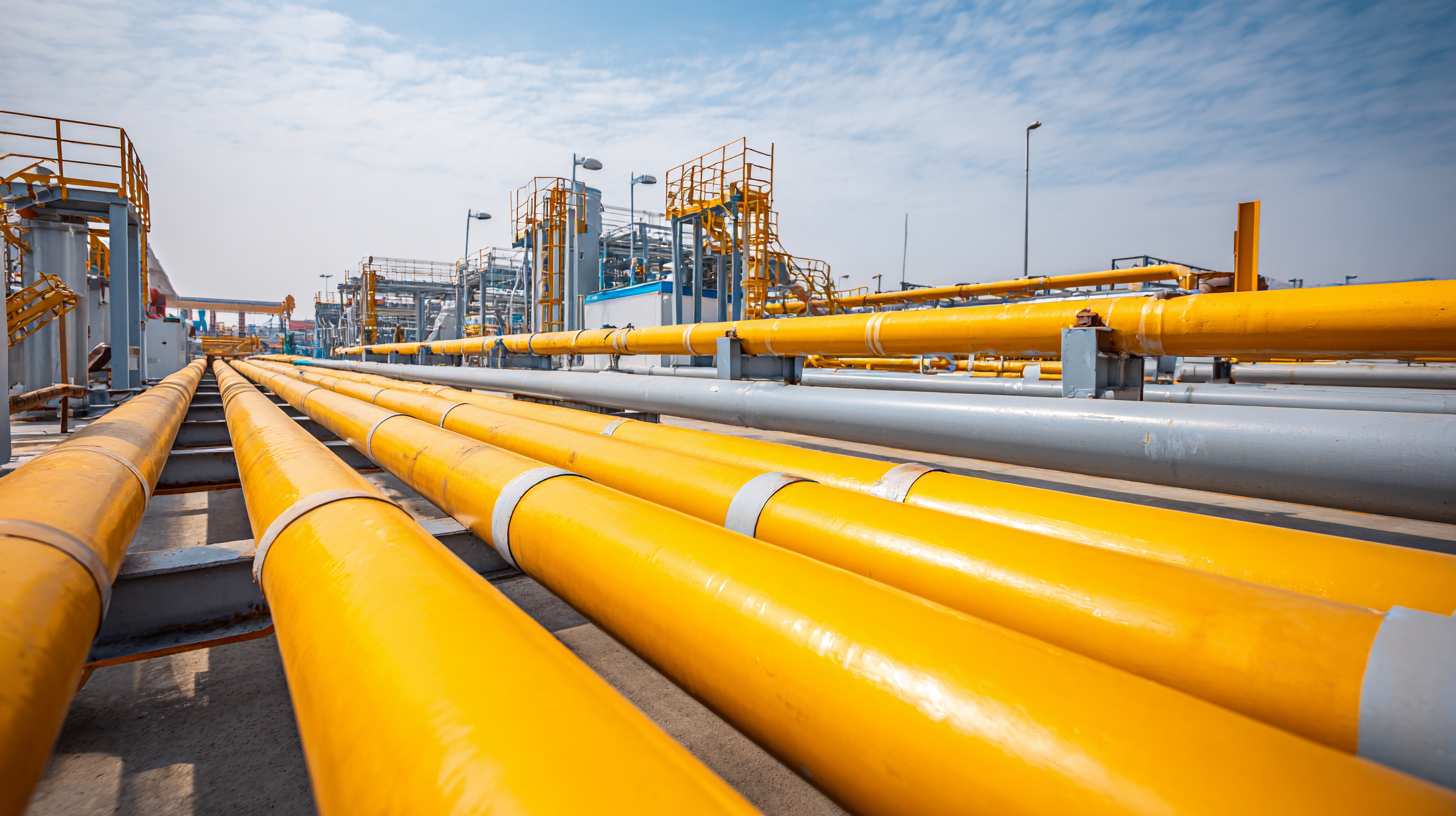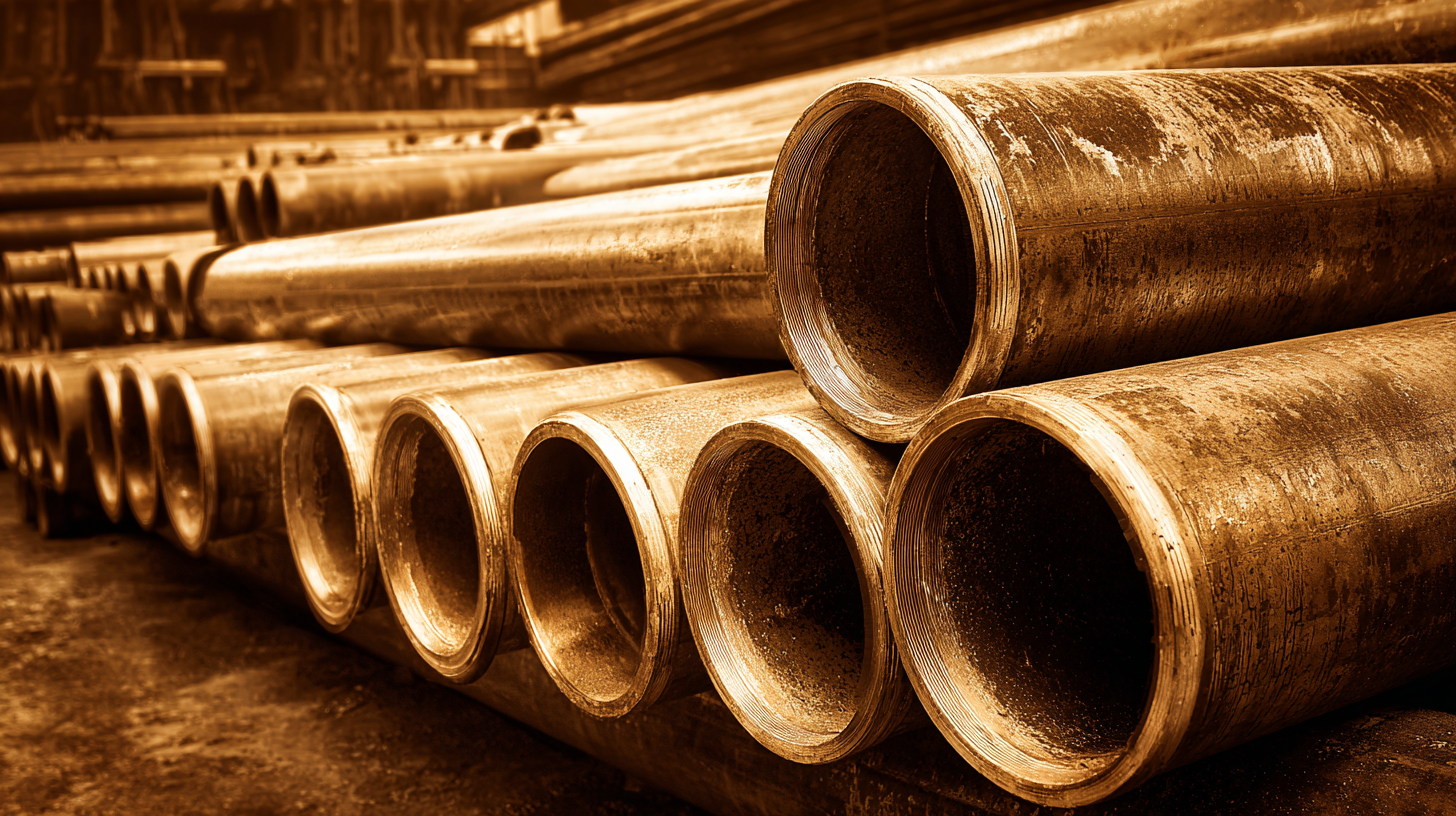Email Id: sale@adctooling.com
In recent years, the global demand for efficient and sustainable piping solutions has prompted industries to seek alternatives to traditional materials, particularly PFA pipes, which have long been favored for their excellent chemical resistance and temperature stability. According to a report by MarketsandMarkets, the global plastic pipe market is projected to grow from USD 37.0 billion in 2021 to USD 47.0 billion by 2026, highlighting an increasing trend toward innovative materials that can meet diverse procurement needs. While PFA pipes offer notable benefits, such as their lightweight nature and superior performance in aggressive environments, advancements in material science have led to the development of alternative solutions that can provide comparable or enhanced performance. This blog explores these innovative alternatives to PFA pipes, addressing their unique advantages and potential applications across various industries.

As industries worldwide face increasing demands for durability and efficiency in piping solutions, the limitations of PFA pipes become more evident. While these pipes are valued for their excellent chemical resistance, they may not always withstand the pressures and environmental challenges encountered in high-demand sectors. For instance, cities like Calgary are actively exploring interim piping solutions to divert water safely following infrastructure failures, highlighting the urgent need for alternatives that offer both reliability and performance in critical applications.

Tips for considering innovative alternatives include researching advanced materials that combine durability with sustainability. Recent developments in plastic recycling techniques present opportunities for utilizing recycled materials in pipe manufacturing, potentially reducing environmental impact while still meeting performance standards. Additionally, leveraging technology such as 3D printing with fiber-reinforced composites can open new avenues for creating custom pipe solutions tailored to specific industrial requirements.
As the construction and municipal management sectors grapple with aging infrastructure, exploring holistic approaches to piping solutions is essential. Engaging with industry experts about emerging technologies, including low-g plumbing advancements, can help municipalities address challenges effectively and enhance their water supply systems.
The production of traditional perfluoroalkoxy (PFA) pipes has significant environmental implications that cannot be overlooked. The chemical processes involved in manufacturing PFA pipes lead to greenhouse gas emissions. According to a report by the International Energy Agency (IEA), the plastic industry contributes approximately 3-4% of global greenhouse gas emissions, with manufacturing processes for fluoropolymers like PFA being particularly energy-intensive. Furthermore, the extraction and processing of raw materials used in PFA production, such as fluorine and hydrocarbons, result in additional environmental burdens, including habitat disruption and potential water contamination.
Moreover, the disposal of PFA pipes poses another environmental challenge. Unlike other materials, PFA is not biodegradable and can persist in the environment for centuries. A study by the Environmental Plastic Pollution Project indicates that the long-lasting nature of fluoropolymers contributes to microplastic pollution, which has become a growing concern for ecosystems worldwide. As industries shift towards sustainability, the need for innovative alternatives to PFA pipes becomes increasingly evident, aiming to balance procurement needs with ecological responsibility. The exploration of alternative materials that offer similar performance without the adverse environmental impact could pave the way for a greener future in pipe manufacturing.
| Alternative Material | Production Process Emissions (kg CO2e) | Recyclability (%) | Lifespan (years) | Cost per meter ($) |
|---|---|---|---|---|
| HDPE | 1.5 | 100 | 50 | 3.00 |
| PP | 1.2 | 90 | 40 | 2.50 |
| PVC | 2.0 | 70 | 30 | 2.00 |
| LDPE | 1.8 | 95 | 25 | 2.80 |
When considering the procurement of pipe materials, the cost implications of using Perfluoroalkoxy (PFA) pipes compared to alternative options cannot be overlooked. PFA, due to its exceptional chemical resistance and thermal stability, is often favored in industries requiring high-performance materials. However, its premium price tag can be a significant barrier for many procurement managers, especially when budget constraints are a major consideration. Understanding the total cost of ownership, which includes installation, maintenance, and expected lifespan, is crucial for making informed decisions.
Alternatives to PFA pipes, such as High-Density Polyethylene (HDPE) or Polyvinyl Chloride (PVC), often present more economical options. While they may not offer the same level of performance in extreme conditions, the advancements in manufacturing techniques have improved their reliability and durability. This makes them suitable substitutes for many applications, particularly where corrosion resistance and high purity are not critical. Conducting a detailed cost-benefit analysis on these materials can uncover significant savings while still meeting operational requirements. Thus, exploring innovative alternatives beyond PFA can lead to more sustainable and financially viable choices in global procurement strategies.
In the quest for sustainable procurement solutions, the spotlight has turned towards innovative materials that serve as biodegradable and durable alternatives to PFA (perfluoroalkoxy alkane) pipes. Facing increasing regulatory pressures and environmental concerns, industries are now exploring materials like bioplastics and composite fibers. According to a recent market analysis by Research and Markets, the biodegradable plastics sector is expected to reach USD 18 billion by 2026, highlighting a growing demand for sustainable alternatives that do not compromise on performance.
When considering alternatives, durability remains a critical factor. New bio-based composites can withstand extreme temperatures and pressures, making them suitable replacements for conventional PFA pipes. The Plastics Industry Association reports that these innovative materials can reduce waste significantly while also demonstrating excellent chemical resistance and mechanical strength.
**Tip:** When selecting alternative materials, evaluate certifications such as ASTM D6400 or EN 13432 to ensure they meet compostability standards.
Additionally, keep an eye on lifecycle assessments that quantify the environmental impact of new materials against traditional options. This data-driven approach not only informs responsible procurement choices but also supports companies' sustainability goals.
**Tip:** Collaborate with suppliers who prioritize transparency in their production processes and material sourcing, ensuring that you're not only choosing sustainable options but also supporting ethical practices.

As the global market continues to evolve, there is a noticeable shift towards
sustainable procurement practices, particularly in the field of
piping solutions. Traditional Polyfluoroalkoxy (PFA) pipes, known for their durability and
chemical resistance, are facing increasing scrutiny due to their
environmental impact. Businesses are now prioritizing
eco-friendly alternatives that align with corporate social responsibility (CSR) goals and address
growing consumer demand for sustainability.
Innovative alternatives to PFA pipes are emerging, driven by advances in materials science
and a commitment to reducing carbon footprints. Biodegradable materials,
recycled plastics, and organic composites are gaining traction, offering comparable performance
without compromising environmental integrity. These sustainable solutions not only minimize waste
but also foster responsible sourcing practices, helping procurement teams meet regulatory
requirements while enhancing brand reputation. As companies adapt to these global trends,
the focus on environmental sustainability is set to redefine procurement strategies
across industries, paving the way for a more responsible and resilient future.